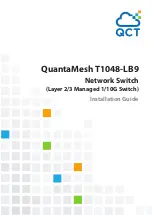
Restrictions for Auto-RP Enhancement
The simultaneous deployment of Auto-RP and bootstrap router (BSR) is not supported.
Restrictions for Configuring Auto-RP and BSR
The following are restrictions for configuring Auto-RP and BSR (if used in your network configuration):
•
If your network is all Cisco routers and multilayer devices, you can use either Auto-RP or BSR.
•
If you have non-Cisco routers in your network, you must use BSR.
•
If you have Cisco PIMv1 and PIMv2 routers and multilayer devices and non-Cisco routers, you must
use both Auto-RP and BSR. If your network includes routers from other vendors, configure the Auto-RP
mapping agent and the BSR on a Cisco PIMv2 device. Ensure that no PIMv1 device is located in the
path a between the BSR and a non-Cisco PIMv2 device.
There are two approaches to using PIMv2. You can use Version 2 exclusively in your
network or migrate to Version 2 by employing a mixed PIM version environment.
Note
•
Because bootstrap messages are sent hop-by-hop, a PIMv1 device prevents these messages from reaching
all routers and multilayer devices in your network. Therefore, if your network has a PIMv1 device in it
and only Cisco routers and multilayer devices, it is best to use Auto-RP.
•
If you have a network that includes non-Cisco routers, configure the Auto-RP mapping agent and the
BSR on a Cisco PIMv2 router or multilayer device. Ensure that no PIMv1 device is on the path between
the BSR and a non-Cisco PIMv2 router.
•
If you have non-Cisco PIMv2 routers that need to interoperate with Cisco PIMv1 routers and multilayer
devices, both Auto-RP and a BSR are required. We recommend that a Cisco PIMv2 device be both the
Auto-RP mapping agent and the BSR.
Information About PIM
Protocol-Independent Multicast (PIM) is called protocol-independent because regardless of the unicast routing
protocols used to populate the unicast routing table, PIM uses this information to perform multicast forwarding
instead of maintaining a separate multicast routing table.
PIM can leverage whichever unicast routing protocols are used to populate the unicast routing table, including
EIGRP, OSPF, BGP, or static routes. PIM uses this unicast routing information to perform the multicast
forwarding function, so it is IP protocol independent. Although PIM is called a multicast routing protocol, it
actually uses the unicast routing table to perform the reverse path forwarding (RPF) check function instead
of building up a completely independent multicast routing table. PIM does not send and receive multicast
routing updates between routers as the other routing protocols do.
PIM is defined in RFC 4601,
Protocol-Independent Multicast-Sparse Mode (PIM-SM): Protocol Specification
.
PIM is defined in these Internet Engineering Task Force (IETF) Internet drafts:
•
Protocol Independent Multicast (PIM): Motivation and Architecture
IP Multicast Routing Configuration Guide, Cisco IOS XE Release 3SE (Catalyst 3650 Switches)
OL-29890-01
113
Configuring PIM
Restrictions for Auto-RP Enhancement
















































